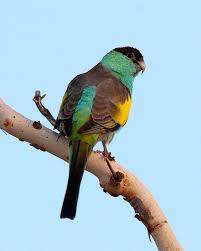In the vibrant and diverse world of parrots, one species stands out for its striking appearance and unique personality – the Helmeted Kakadu. Also known as the Yellow-Crested Cockatoo, this magnificent parrot species has captured the hearts of bird enthusiasts worldwide with its charming demeanor and stunning plumage. In this blog, we will explore the fascinating world of the Helmeted Kakadu, from its appearance and behavior to its habitat and conservation status.

I. Understanding the Helmeted Kakadu: The Helmeted Kakadu (Cacatua sulphurea) is a medium-sized parrot belonging to the cockatoo family. It is recognized for its distinct yellow crest on top of its head, which resembles a helmet, thus earning its common name. This beautiful bird is native to the tropical rainforests and lowland forests of Indonesia, particularly on the islands of Sulawesi and the Lesser Sunda Islands.
II. Physical Characteristics: The Helmeted Kakadu is easily distinguishable by its vibrant appearance. It has a predominantly white plumage, with a bright yellow crest on top of its head. The crest can be raised or lowered depending on the bird’s mood and level of excitement. Its wings and tail feathers also feature splashes of yellow, giving it a truly majestic appearance.
III. Personality and Behavior: The Helmeted Kakadu is renowned for its social and affectionate nature. In the wild, they are often seen in small flocks, and they form strong bonds with their mates and family members. They are intelligent birds and are known for their curious and playful behavior. Additionally, they are highly vocal and have a wide range of calls and vocalizations to communicate with each other.
IV. Feeding Habits: As omnivorous birds, Helmeted Kakadus have a varied diet. In the wild, they primarily feed on seeds, nuts, fruits, berries, and various plant materials. They also consume insects and larvae as a source of protein. In captivity, they can be fed a balanced diet that includes a mix of seeds, fruits, vegetables, and pellets.
V. Breeding and Reproduction: Helmeted Kakadus are monogamous birds, and they form long-term pair bonds with their mates. During the breeding season, females lay one to three eggs in a tree cavity or a hollow branch. The incubation period lasts for about 30 days, and both the male and female take turns incubating the eggs and caring for the chicks.
VI. Habitat and Range: The Helmeted Kakadu inhabits a variety of forested habitats, including lowland rainforests, mangroves, and wooded areas. They are commonly found in the islands of Sulawesi, Buton, Muna, and the Lesser Sunda Islands in Indonesia.
VII. Conservation Status and Threats: The Helmeted Kakadu is listed as vulnerable by the International Union for Conservation of Nature (IUCN). Like many parrot species, they face significant threats in the wild, including habitat loss due to deforestation, illegal pet trade, and hunting. Conservation efforts are vital to ensuring the survival of this magnificent species.
VIII. Conservation Efforts: Numerous conservation organizations, along with local communities and governments, are working together to protect the Helmeted Kakadu and its natural habitat. Initiatives include creating protected areas, raising awareness about the importance of conservation, and combating illegal wildlife trade.
Conclusion: The Helmeted Kakadu is a truly captivating parrot species, with its vibrant appearance and affectionate personality. As with many wildlife species, the Helmeted Kakadu faces challenges in the wild, but with continued conservation efforts and support, we can ensure that these magnificent birds continue to grace the tropical forests of Indonesia for generations to come.



















Add Comment